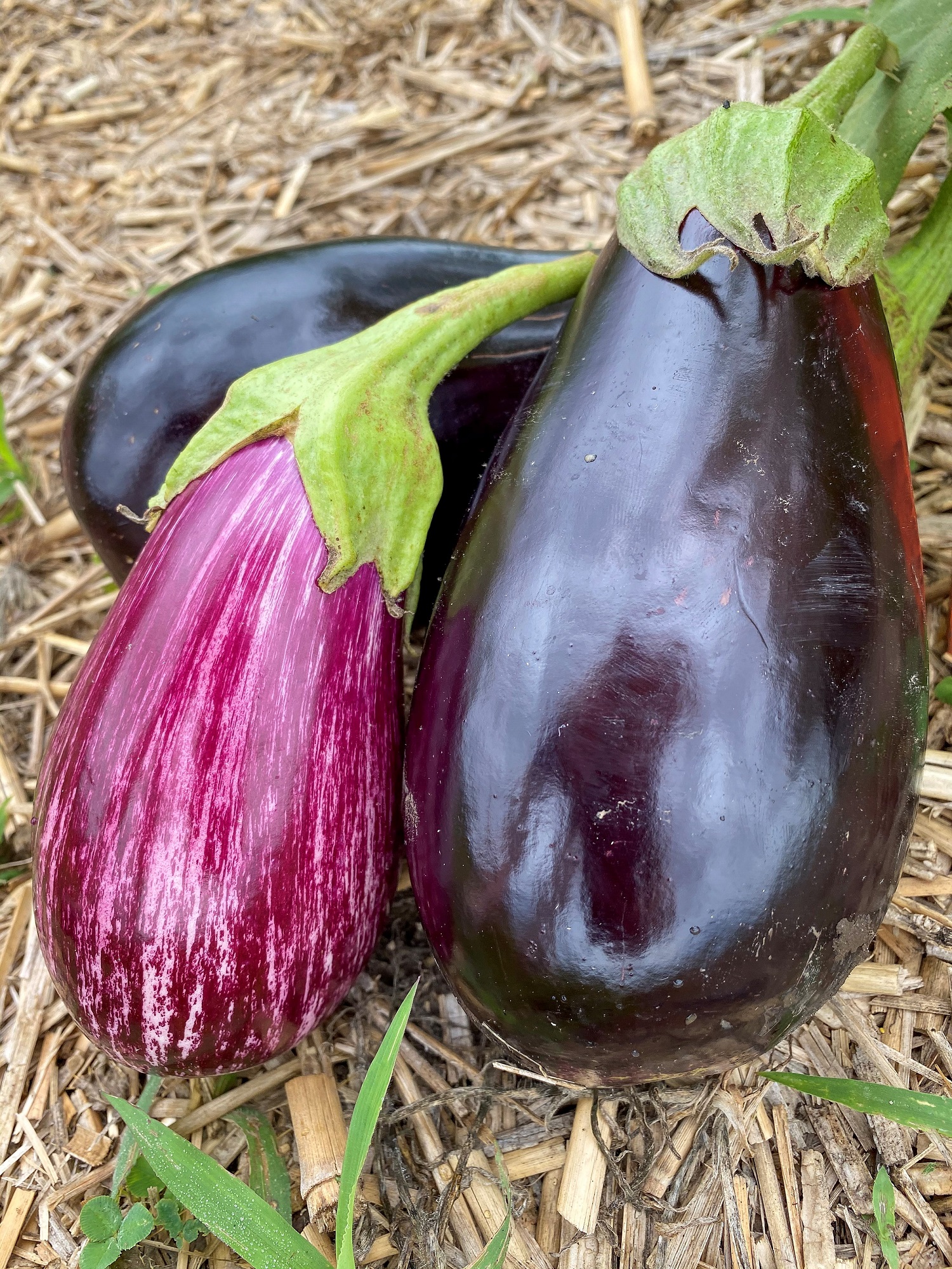Eggplant can be steamed, baked, fried, grilled, boiled, sauteed, breaded and stuffed
Eggplant is one of the most versatile vegetables in the home garden. The fruit can be steamed, baked, fried, grilled, boiled, sauteed, breaded and stuffed. Believed to be native to India, eggplant is popular in dishes worldwide. In this article, horticulture experts with Iowa State University Extension and Outreach offer tips on selecting, planting and growing eggplant.
When can I plant eggplant in the garden?
Set plants in the garden after the danger of frost is past. Eggplant can be planted outdoors in mid-May in central Iowa. Gardeners in southern Iowa can plant about one week earlier, while those in northern counties should wait one additional week. The last practical planting date is June 20. When starting plants indoors, sow seeds six to eight weeks before the anticipated outdoor planting date.
What are some good eggplant varieties for Iowa?
Numerous eggplant varieties (cultivars) are available for the home garden. These varieties differ in color, size and shape. Fruit colors include green, white, pink, purple and black. Some fruits are striped. Fruit may be oval, pear-shaped or long and narrow. Asian types may produce fruit that are 10 to 12 inches long. In contrast, some varieties produce miniature fruit that are only 1 to 2 inches long.
Suggested eggplant varieties for Iowa include ‘Applegreen’ (oval, 5 to 6 inches long, pale green), ‘Bambino’ (oval, 1 inch long, purple-black), ‘Black Beauty’ (oval, 6 to 7 inches long, purple-black), ‘Black Bell’ (oval to round, 6 inches long, purple-black), ‘Caspar’ (cylindrical, six 6 inches long, white), ‘Cloud Nine’ (oval, 6 inches long, white). ‘Dusky’ (pear-shaped, 6 to 7 inches long, purple-black, ‘Ghostbuster’ (oval, 6 inches long, white), ‘Ichiban’ (Asian type, narrow, 12 inches long, dark purple), ‘Kermit’ (round, 2 inches in diameter, deep green with white blossom end), ‘Millionaire’ (Asian type, slender, 10 inches long, purple-black), and ‘Rosita’ (teardrop-shaped, 8 inches long, rose pink).
What is a suitable planting site for eggplant?
Eggplant performs best in well-drained, fertile soils in full sun. If a soil test has not been conducted, apply and incorporate 1 to 2 pounds of all-purpose garden fertilizer, such as 10-10-10, per 100 square feet prior to planting.
Eggplant is part of the same plant family as tomato, potato and pepper. To provide good crop rotation practices, do not plant eggplant or other members of its family in the same garden location as they previously have been in the last two or three years.
What is the proper spacing when planting eggplant in the garden?
When planting, space plants 2 feet apart within the row. Rows should be spaced 3 feet apart.
There are tiny holes in my eggplant foliage. What should I do?
The tiny holes are likely due to flea beetles. Flea beetles are the most common eggplant pest in the home garden. Adults are tiny, shiny, black beetles. They possess large hind legs that enable them to jump. Flea beetles eat small, round holes in the eggplant foliage, resulting in “shothole” damage. Minor flea beetle damage will have little effect on crop yields. If significant damage begins to appear, treat plants with an insecticide. As always, carefully read and follow label directions when using pesticides.
When can I harvest eggplant?
Begin harvesting the large, oval varieties when the fruit is 2 inches in diameter. Continue to harvest the fruit until they are 4 to 6 inches across. At the proper harvest stage, the fruit will be firm and shiny. Overmature fruit will be dull, seedy and tough. Remove the fruit with a knife or hand shears, leaving an inch of stem on each fruit.
Eggplant fruit do not keep well after harvesting. For best quality, it’s generally best to leave them on the plant until you are ready to use them. Eggplant fruit can be stored for up to seven days at a temperature of 46 to 54 degrees Fahrenheit and a relative humidity of 90% to 95%.




